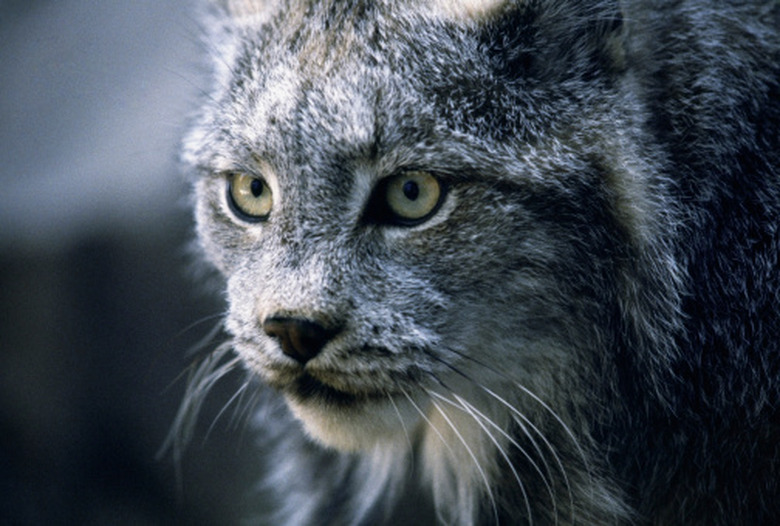Bobcats Of Alabama
The bobcat (Lynx rufus) is common throughout the United States. This medium-sized wildcat reaches a mature weight of 30 to 40 pounds and measures 31 to 48 inches long, from nose to tail. Their lifespan is 12 to 15 years. In Alabama, bobcats inhabit a number of regions and often live in close proximity to humans. Bobcats have a low adult mortality rate, leading to proliferation in areas with adequate food supply.
Habitat and Range
Habitat and Range
Bobcats live throughout Alabama. Preferred bobcat habitats include canyons, rocky outcroppings and heavily wooded upland areas, though the cats roam a number of other areas, including swamps, hardwood forests, areas with dense shrub cover and partially exposed farmland. In Alabama, most bobcat sightings occur at the borders of agricultural fields or on the edge of forested areas. Kevin Hansen, author of "Bobcat: Master of Survival," writes that adult male bobcats in Alabama have a range of approximately a square mile.
Behavior
Behavior
Bobcats exhibit nocturnal, predatory behavior. Described as fierce hunters by National Geographic, bobcats eat squirrels, mice, rabbits and snakes, and occasionally attack large animals such as deer. Bobcats often cache kills for later consumption and may have a number of carcasses hidden in their home territory. Bobcats in Alabama and Louisiana prefer deforested farmland in otherwise wooded areas because it provides open hunting ground surrounded by tree cover. Though bobcats are solitary animals, a study from 1978 measured the Alabama bobcat density at two to three per square mile.
Hunting
Hunting
Alabama permits bobcat hunting all year round with no bag limit during daylight hours. Technically, bobcat hunting qualifies as trapping because the state designates bobcats as fur-bearing animals. Restrictions apply to the use of dogs and certain weapons. During turkey and deer season, hunters may only use guns to kill bobcats in certain areas. The same applies for bow-hunting season with turkey and deer. The use of dogs in bobcat hunting is forbidden during spring turkey season. All hunters must be licensed by the state, and all trapped bobcats must be tagged by a state official.
Bobcats and Cougars
Bobcats and Cougars
Alabama is also home to cougars. Cougars (Felis concolor), known as mountain lions, pumas, panthers and catamounts, reach a mature length of 6.5 feet and weigh 75 to 120 pounds. These cats are rarely seen in Alabama, though wildlife experts M. Keith Causey and Mark Bailey report that Alabama residents often confuse bobcat activity — such as tracks, animal carcasses and sightings — with cougar behavior.
Cougars are much larger than bobcats. Both animals avoid contact with humans at all costs. They exhibit copious daytime activity, unlike the bobcat, which is active primarily at dawn and dusk. While bobcats hunt a number of small animals and store them for later, cougars kill large animals and consume one kill over a number of days.
Cite This Article
MLA
Gish, Will. "Bobcats Of Alabama" sciencing.com, https://www.sciencing.com/bobcats-alabama-8262405/. 22 November 2019.
APA
Gish, Will. (2019, November 22). Bobcats Of Alabama. sciencing.com. Retrieved from https://www.sciencing.com/bobcats-alabama-8262405/
Chicago
Gish, Will. Bobcats Of Alabama last modified March 24, 2022. https://www.sciencing.com/bobcats-alabama-8262405/
